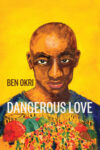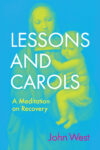In that idle little week between Christmas and New Year’s, when all there is to do is wait for life to return, I began Teju Cole’s Every Day Is for the Thief. The novel follows a nameless protagonist navigating Lagos and its surrounding territories during a similar time of the year. The narrator is a doctor in New York City who, before the events of the novel, hasn’t returned to the motherland in fifteen years. Upon his return, he must reacquaint himself with Nigeria, as neither native son nor stranger but something in-between. It’s in this liminality that the book remains, opening with the narrator trying to pick up his new passport from the Nigerian consulate. His scene serves as an introduction to Nigeria’s pervasive bribery issues, as he learns how the employees delay passport shipments unless they can pocket an extra $55. The narrator finds this encounter somewhat familiar, like the faint plasticy stench of some childhood mundanity.

This novel, as most do, appeared at a serendipitous point in my life. My family made a similar homecoming back in June. I hadn’t been to the island since the seventh grade, when we stayed in a cousin’s small bare-brick cottage for a sweltering Thanksgiving, a week that remains coated in that opaqueness common in the memories of children who just want to go home. Then, my sister and I spent our days shuffled between our grandmother’s lopsided house and our great-grandmother’s shanty, cloaked in darkness thanks to a woeful lack of streetlights, and we interacted with our various cousins, uncles, and aunties as if on autopilot. There was no air conditioning in the house we stayed in, so every night we laid cover-less, steeped in night, as the heat and horse-flies danced in cruel harmony.
That was then. This time, we stayed in a boxy hotel overlooking Dover Beach where the building, standing among an extended row of luxury inns that grew larger in procession, looked as if someone had stripped a layer of the ocean’s blue and painted over the plaster with it. We were in town for a cousin’s wedding, and she worked there as a receptionist. Like the narrator of Every Day Is for the Thief, we resided in the borderlands between foreign and not, perpetually running towards a home seen just over the horizon before it dissolves into the sunset, like air bending to the whims of heat.
I understood Cole’s protagonist—likely Cole’s Lady Bird, an avatar through which the reader can briefly inhabit a region with a certain level of familiarity—the way I understood Elio, letting vexed tears fall on Oliver’s arms, grappling with first inevitability. Or the way I understood what the bright paint over low-income housing signified in The Florida Project, or the way love refracts through Durga Chew-Bose’s Too Much and Not the Mood. All through 2017, I found myself in the year’s art with ease, as did millions more consumers, since so much of it set out to do so.
In 2014, Rebecca Mead published “The Scourge of ‘Relatability,’” in which she explains the term or at least our current conception of it. She writes, “The contemporary meaning of ‘relatable’—to describe a character or a situation in which an ordinary person might see himself reflected—first was popularized by the television industry.” She demarcates relatability from identification, the former being an accommodation to the consumer, the latter a method through which consumers project themselves onto characters within the product. Our critical toolkit throughout 2017 revolved around the latter, as the public sparred over who gets to be projected onto the silver screen while the cultural directorate sat waiting for the winner to emerge from the rubble. We searched for ourselves under old piers and falling cracks in the sand, following a map drawn by some mysterious stranger we’ve yet to understand.
The contrarian in me wants to dismiss relatability as a directive. I do understand what it’s like to yearn for art that looks like you, but then Spike Lee released his latest joint, centering a beautiful, dark-skinned, polyamorous queer woman artist, and with it my righteous vanity dissipated into a placid dearth. It was predictable, embarrassing at times, capitalizing off the idea of the woman I’d like to be and distorting her into something else. Similarly, the Cole novel exposed that discomfiting complex plaguing all third-culture kids who’ve made a home everywhere and nowhere. As did “Cat Person” expose the indignities too many women are willing to put up with, as did Call Me By Your Name remind us all of how first loves always end. When we look for ourselves in art, we expect the good or colorfully neutral, and we tend to shrink when confronted with the bad; not the nostalgic lack of self-awareness in giving ourselves fake names in our attempts at individuation, but the stretch marks, discoloration, wanton unevenness you’re bound to find when standing bare before a mirror.
Kaila Philo writes a monthly column of dispatches from the urgency of life. She currently lives in chaos.
This post may contain affiliate links.







